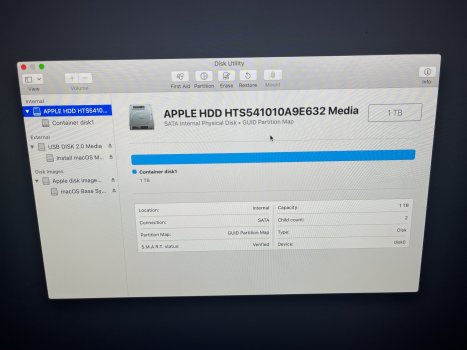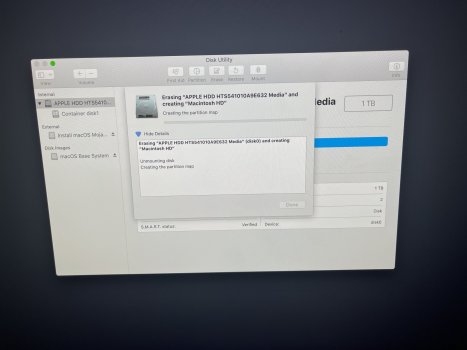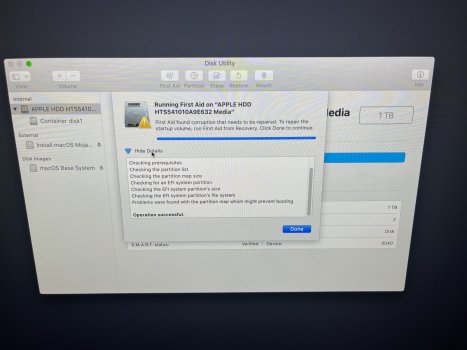Hi, I brought an imac 2019 21.5" 1tb HDD to a 3rd party repair shop (warranty expired) since I cant install the OS through online recovery or a bootable drive. It just freezes and cant use erase, use first aid or even reinstall the os. The advice was to replace the hard drive. Im planning on replacing it with a 1tb SSD. Do you guys think it's a hard drive problem? Im just starting to read about it but do I also need to install a thermal sensor on this? And after replacing the HD, I can just reformat the SSD through disk utility and install the OS through recovery mode?
I ask this since the shop charges for the labor of replacing the hard drive and a different charge to install the OS. If the OS could easily be installed, I would like to just pay for the HD replacement. I have a usb bootable drive prepared,
The unit was just given to me so I want to try to have it repaired if possible.
(a) It could well be the hard drive. I've had this happen on at least three occasions. Mostly a hard drive fails in ways that are obvious and gradual, or can be worked around (eg random bad sectors in the middle) but a hard drive can fail in ways that macOS simply not accept and cannot work around. (Maybe no OS can?)
Looks like you have that sort of flaw -- one of the "critical" sectors at the very beginning of the disk has failed and can't be mapped around. Well, it happens!
(b) You don't HAVE to replace the drive. Macs can boot off external USB drives (well, with M1 or even T2 Macs it's a lot trickier but still possible), and it would be much easier to do that and just use that as experiment.
What you want to do is boot via Internet and get to the point where you install the OS on your external USB SSD. Then set that USB SSD as the boot drive and life should be fine from that point on.
I am leaving out steps that I assume are obvious -- the main knowledge you need is simply that
- you can install an OS on an external drive
- you can boot from it
- life works fine in this mode.
Once you've done it enough that you see it works and are comfortable with the new drive, you can use Migration Assistant to reinstall everything from your Time Machine backup onto that external boot drive.
Even a USB2 external SSD feels adequate for booting and running the machine, but if you can get a USB3 drive (or a USB3 enclosure) that's a little bit better of course.
VERY IMPORTANT!!
Check the power rating of your SSD and enclosure. MOST SSD's are specced to run at a little under 4.5W. They will run fine when connected to a USB3 port (which provides 4.5W) but NOT a USB2 port (which provides 2.5W). Symptoms will be that everything seems to work (the drive boots, runs for a few min, but randomly crashes, whenever too many back to back writes exceed the 2.5W f the USB2 port).
Alternative workarounds are to use an enclosure that accepts a power supply, or to use one of those weird double-headed USB cables that have a power connector (red) and a data connector (black) and so can source twice 2.5W.
Depending on what exactly is wrong, every time you boot you might get a warning that macOS cannot read the internal drive. You may be able to format the internal drive to empty space or something else it will ignore; or may just have to live with this. On my iMac I just have to live with it. Every few months when I reboot, I get told there's a drive macOS can't read, I hit the "ignore" button, and that's it, end of story till next reboot.
But apart from that, everything is fine. I have an SSD in a USB3 enclosure, I taped the enclosure to the back of the iMac so it's basically "built-in"; it's stable and out of the way, and the iMac works fine, has been running that way for maybe three years now.





